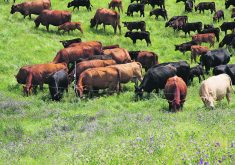In our part of Saskatchewan, the cattleman’s nightmare continues. There is nearly a foot of fresh snow on the ground and almost all of our bales are still in the fields waiting for the frost to harden up the sodden earth so we can haul.
Despite the recent -30 C temperatures, it is unlikely the ground will freeze before the deer and elk destroy our feed supply. The only solution is to plow or drag the snow in an effort to get the frost to do its job.
Read Also

Europe holds promise for Canadian lentils
Pulse Canada is trying to help boost lentil consumption in Europe, which is already the fourth largest market.
With no bales in storage, we are barely getting enough out of the fields to keep up with the daily feeding now that the snow is too deep for grazing. It is a no-go for the semi and large hay trailer.
We either haul one bale at a time or pack the snow for several days and use a small wagon. Very slow and frustrating.
The entire summer was a nightmare with never a rain free block of more than three days until the end of September. Most of our hay was cut and baled during the first three weeks of October, but that ended on Oct. 25 with rain and snow that dumped another two and a half inches of moisture.
The first week of November we had another major runoff, the third runoff since spring. Never in 33 years have we seen the ground so saturated. We had to abandon almost 40 percent of our hay acres. …
At the Saskatchewan Cattleman’s Association district meeting at Tisdale on Nov. 3, a motion was passed requesting government assistance for livestock producers in flooded areas. The motion calls for $150 per cow, $75 per feeder and $40 per flooded acre of unharvested forage.
To date the government has responded in token fashion and if no other action is taken, we will assume that government has no heart for the plight of producers facing these dire circumstances.
Dave Bober
Hudson Bay, Sask.














